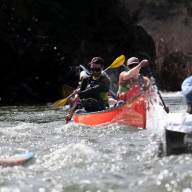Recently, The Valley Reporter ran a story about speed limit signs appearing on one of Fayston’s dirt roads where there had previously never been such signs. In interviews, select board members said the signs that were installed were neither enforceable, nor were they located in areas where they would be enforceable if the town had contracts with local law enforcement agencies. Further, board members noted that the signs installed on the dirt road would require relocation closer to the top and bottom of the road.
That led The Valley Reporter to wonder how other Valley towns manage speed limits on their many miles of dirt roads, which led to a broader look at what parameters towns must follow in order to enforce speed limits on back roads.
A 2016 state-issued document titled “Setting Speed Limits – a Guide for Towns” notes that, per state law, towns must perform an engineering and traffic study before raising or lowering speed limits. A petition from local residents may encourage a select board to perform such a study, but a petition cannot be the sole reason a speed limit is created or changed. Furthermore, the guide notes, it is advisable to establish a reasonable speed limit and place signs warning drivers of upcoming curves and other hazards, rather than create different speed limits for each hazard a driver might encounter along the same road.
State statues also dictate how and where signs are placed and what signs are placed. Per the 2016 guidelines, there is no set minimum distance between signs within a speed limit zone. Since intermediate signs remind drivers of the speed limit, the distance between them should be determined based on time and roadside distractions. Based on a one-minute time span, for example, a 25 or 30 mph limit could be signed about every 1/2 mile and a 40 or 45 mph limit could be signed about every 3/4 mile. This assumes that there are no unusual distractions to occupy a driver's attention such as recreation activities, shop windows, other types of signs, panoramic views, etc.
“Another rule of thumb could be 0.3 to 0.4 miles for 25 to 30 mph speed zones and 0.5 to 0.8 miles for 35 to 45 mph zones. Signs within a 50-mph zone can be a mile or two apart since state law indicates the speed limit is 50 mph unless otherwise posted. Do not use speed zones to warn motorists of hazardous conditions. On rural roads, for example, avoid posting speed limits, say from 40 to 30 to 35 to 45 back to 30 and so on. Rather, try to establish one speed limit and use advisory speed plates as needed for curves, hills and other hazardous conditions,” the guidelines stipulate.
In terms of enforceability, which Fayston officials acknowledge is an issue in the town, the state guide notes that “to effectively enforce a law, the public must believe that the law is reasonable. Local officials should not set a uniform speed limit for all roads and streets, nor should they succumb to pressure by residents to lower speed limits.” The document continues, “The random installation of signs and speed limits can be detriment to safety by breeding disrespect for all speed limits.”
Readers, let us know, are there speed limit signs on your dirt roads? Are they new, old, enforceable?













